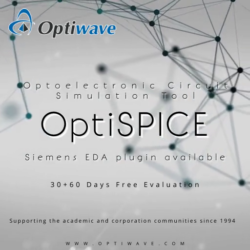
Join us at the AngelTech Live III
on 12th April 2021
Registration is open and free Here
The drive to miniaturization, battery power, high speed, sensing, imaging, and advanced computational processing means that photonic integration will grow, and grow quickly. Cramming discrete, individual components in a small box is going away, in fact, just like lots of transistors in an IC. Integration is key, and with photonics, there are a number of engineering challenges that need to be addressed that range from efficiently working with light, to driving high-speed data with very low power consumption.
This year’s Angeltech LIVE III is the place to be to make sure you are calibrated and knowledgable in the latest work, advancements, and designs in the field of PICs – photonic integrated circuits.
Optiwave is excited to invite you to this event, where we will present our latest progress in the Optoelectronic Circuit Simulation Tool.
Mark your calendar, join, and listen to our presentation, along with other leaders in the field of photonics.

